CAMBRIDGE, Mass. — Aluminum has long been the poster child of recycling. About half of all aluminum used in the United States is now recycled, and this recycling has clear and dramatic benefits: Pound for pound, it takes anywhere from nine to 18 times as much energy to produce aluminum from raw ore as from recycled material.
Because it works so well, aluminum recycling continues to expand. But this expansion could run into problems, a new MIT analysis shows, unless measures are put in place to reduce impurities that can build up as aluminum is recycled over and over again — everything from paint and labels on cans to other metals that are accidentally mixed in. Such impurities will continue to add up, the MIT researchers say, unless extra measures are taking during sorting of the recycled goods, or during their molten processing.
MIT researchers Randolph Kirchain and Elsa Olivetti, of the Materials Systems Lab, along with Gabrielle Gaustad of the Rochester Institute of Technology, published their findings in the journal Resources, Conservation and Recycling.
A major aluminum producer requested this analysis to help decide whether to install improved separation systems to prepare for impurities that could become more serious over time. “They couldn’t make the business case based on what’s happening today,” Kirchain says — but his team’s analysis showed that it would indeed make sense to install such systems in anticipation of future changes.
For now, the problem remains manageable, Kirchain says, because different uses require different grades of aluminum. For example, aluminum engine blocks, one major market for recycled material, can be made from metal with relatively high levels of impurities without suffering any loss of performance or durability. But more specialized applications, such as for electronic circuits or for aerospace materials, require much higher purity.
“There is a huge range of impurity tolerance,” Olivetti says. “The question is, how will the balance of such markets over time compare with the kinds of materials coming through the recycling stream?”
The study found many techniques available to reduce impurities in recycled aluminum. In some cases, these technologies are simply extensions of those already used in the initial separation of aluminum from raw ore; others are extensions of processes used to separate different materials in the recycling stream. Most of these systems are difficult to add as retrofits to existing plants, the study found, so it makes more economic sense to add them as new plants are built, even if they are not yet needed.
“We’re continuing to collect more and more scrap,” Kirchain says, which suggests that “we’re likely to have more and more problems” with accumulating impurities. So far, the operators of aluminum smelting plants have been able to accommodate variations in quality. “If material comes in that’s more contaminated, they’ll divert that toward more forgiving applications,” he says. The cleanest material is reserved for the most specialized applications, such as airplane parts.
Kirchain says his team’s analysis — although directed specifically at aluminum — is also an attempt to develop methods for analyzing the lifecycle of other materials that are becoming more significant parts of the recycling stream. And it includes analysis of the social factors governing people’s decisions on disposal of materials, which can affect how much contaminating material ends up in a given waste stream — or whether potentially useful material ends up in a landfill instead of being reused.
In order to maximize the utility of recycled aluminum, as well as other recycled materials, there is a need for more research on reducing accumulated contaminants, Kirchain says. “This is a technological area that has been underinvested in,” he says. “Technology for dealing with garbage is not an exciting, high-profile field,” he says, “but there is real value in investing in this.”

